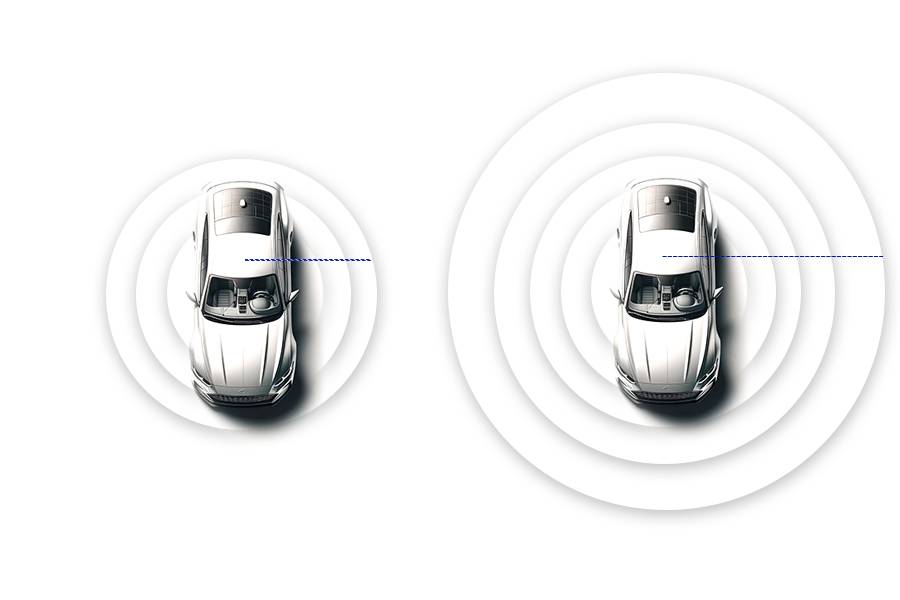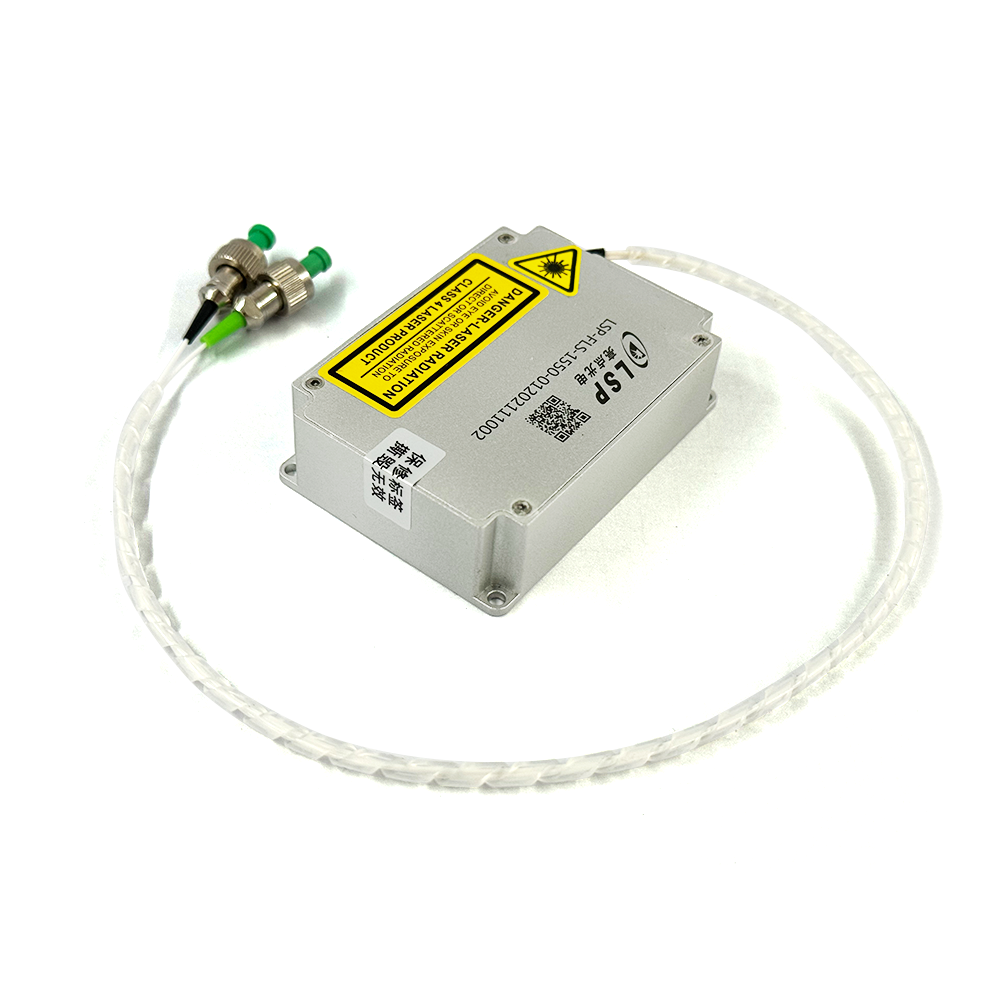LIDAR (light detection and ranging) technology is an important part of modern remote sensing technology, which is widely used in self-driving cars, terrain mapping, environmental monitoring and other fields. By transmitting laser pulses and measuring their reflected signals, LIDAR is able to accurately measure the distance and shape of target objects. According to the wavelength of the laser, LIDAR is mainly categorized into two types, 905nm and 1550nm, which have their own characteristics and application areas.
Let's simplify and clarify the comparison between 905nm and 1550/1535nm LiDAR systems:
| Features | 905nm | 1550nm |
| Safety | relatively low safety to eyes | eye-safety wavelength |
| Costs | Relatively Low | Relatively High |
| Detection Range | Relatively Shorter | Relatively Longer |
| Environment Adapbility | Weak penetration in fog and dust | Better penetration in fog and dust |
| sunlight resistance | Poor | Good |
In the realm of autonomous driving and other high-precision applications, the choice of LiDAR (Light Detection and Ranging) technology plays a pivotal role in the system's performance and reliability. The debate between using 1550/1535nm and 905nm wavelengths for LiDAR systems centers around several critical advantages offered by the longer wavelength (1550/1535nm) technology. These advantages include enhanced safety, greater detection range, and superior performance under various environmental conditions. Let's delve into a detailed analysis of these benefits:
The Prime Advantage: The paramount benefit of the 1550/1535nm LiDAR systems lies in their enhanced safety for human eyes. The longer wavelengths are more readily absorbed by the cornea and lens, preventing the potentially harmful light from reaching the sensitive retina. This characteristic enables these systems to operate at higher power levels within safe exposure limits, combining high-performance capabilities with uncompromised safety for humans in close proximity.
A Key Benefit: The ability to safely emit higher power translates directly into a longer detection range for 1550/1535nm LiDAR systems. For autonomous vehicles, this means being able to detect objects from a greater distance, affording the system more time to make informed decisions. This extended range significantly enhances the vehicle's safety and operational efficiency, providing a clear edge over shorter wavelength alternatives.

Improved Reliability: Operating at 1550/1535nm wavelengths, these LiDAR systems demonstrate markedly better performance in challenging weather conditions such as fog, rain, or dust. The longer wavelengths penetrate atmospheric particulates more effectively, ensuring the system's functionality and reliability remain intact even when visibility is poor. This resilience is crucial for maintaining consistent performance of autonomous systems, regardless of environmental challenges.
Distinct Advantage: Another significant advantage of the 1550/1535nm LiDAR systems is their reduced sensitivity to interference from ambient light sources, including sunlight. The wavelengths utilized by these systems are less prevalent in natural and artificial light sources, minimizing the risk of interference that could compromise the accuracy of the LiDAR's environmental mapping. This feature is especially valuable in scenarios where precision in detection and mapping is paramount.
Potential Advantage: While not a primary consideration for all applications, the longer wavelengths of the 1550/1535nm LiDAR systems can interact differently with certain materials, offering potential benefits in specific scenarios where light penetration through particulates or surfaces could be advantageous.

Despite these clear advantages, the choice between 1550/1535nm and 905nm LiDAR systems also involves considerations of cost and specific application requirements. While 1550/1535nm systems provide superior performance and safety, they generally come with a higher price tag due to the complexity and lower production volumes of their components. Therefore, the decision to employ 1550/1535nm LiDAR technology often hinges on the specific needs of the application, including the desired range, safety considerations, environmental conditions, and budget constraints.
1.Uusitalo, T., Viheriälä, J., Virtanen, H., Hanhinen, S., Hytönen, R., Lyytikäinen, J., & Guina, M. (2022). High peak power tapered RWG laser diodes for eye-safe LIDAR applications around 1.5 μm wavelength.[Link]
Abstract: "High peak power tapered RWG laser diodes for eye-safe LIDAR applications around 1.5 μm wavelength" discusses developing high peak power and brightness eye-safe lasers for automotive LIDAR, achieving state-of-the-art peak power with potential for further improvements.
2.Dai, Z., Wolf, A., Ley, P.-P., Glück, T., Sundermeier, M., & Lachmayer, R. (2022). Requirements for Automotive LiDAR Systems. Sensors (Basel, Switzerland), 22.[Link]
Abstract: Requirements for Automotive LiDAR Systems" analyzes key LiDAR metrics including detection range, field of view, angular resolution, and laser safety, emphasizing the technical requirements for automotive applications ”
3.Shang, X., Xia, H., Dou, X., Shangguan, M., Li, M., Wang, C., Qiu, J., Zhao, L., & Lin, S. (2017). Adaptive inversion algorithm for 1.5μm visibility lidar incorporating in situ Angstrom wavelength exponent. Optics Communications.[Link]
Abstract: Adaptive inversion algorithm for 1.5μm visibility lidar incorporating in situ Angstrom wavelength exponent" presents an eye-safe 1.5μm visibility lidar for crowded places, with an adaptive inversion algorithm that shows high accuracy and stability (Shang et al., 2017).
4.Zhu, X., & Elgin, D. (2015). Laser safety in design of near-infrared scanning LIDARs.[Link]
Abstract: Laser safety in design of near-infrared scanning LIDARs" discusses laser safety considerations in designing eye-safe scanning LIDARs, indicating that careful parameter selection is crucial for ensuring safety (Zhu & Elgin, 2015).
5.Beuth, T., Thiel, D., & Erfurth, M. G. (2018). The hazard of accommodation and scanning LIDARs.[Link]
Abstract: The hazard of accommodation and scanning LIDARs" examines laser safety hazards associated with automotive LIDAR sensors, suggesting a need to reconsider laser safety evaluations for complex systems consisting of multiple LIDAR sensors (Beuth et al., 2018).

Need A Pulsed Fiber Laser as the LiDAR Laser Source?
Contact: Lumispot
Phone: +86-15072320922
Tel: +86-510-87381808
Email: sales@lumispot.cn
Add: Bldg 4 No.99 Fu Rong 3rd Road, Wuxi, China